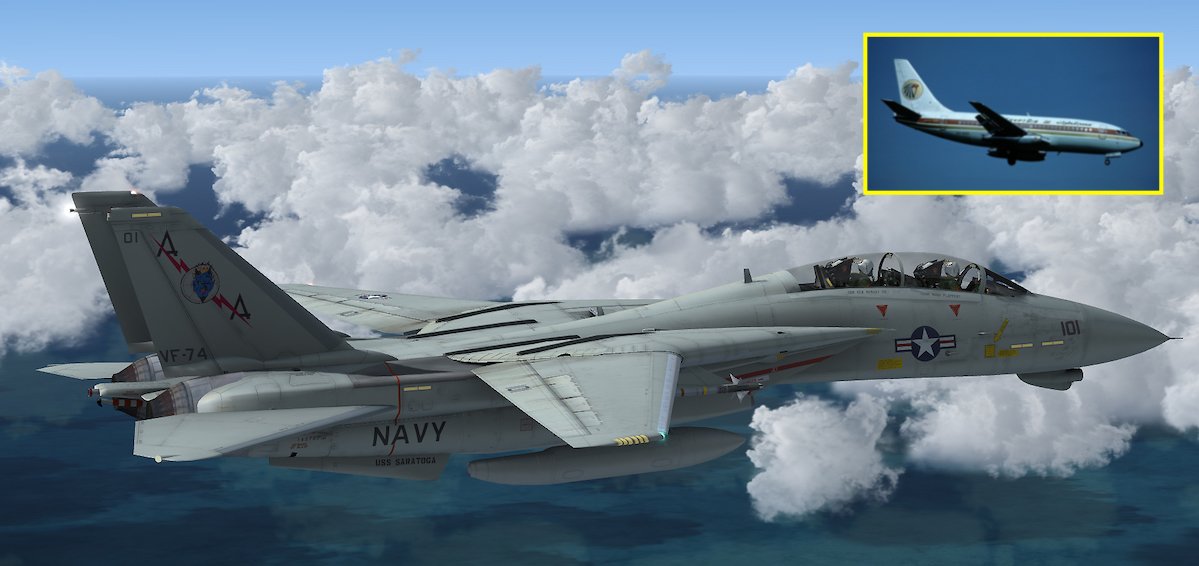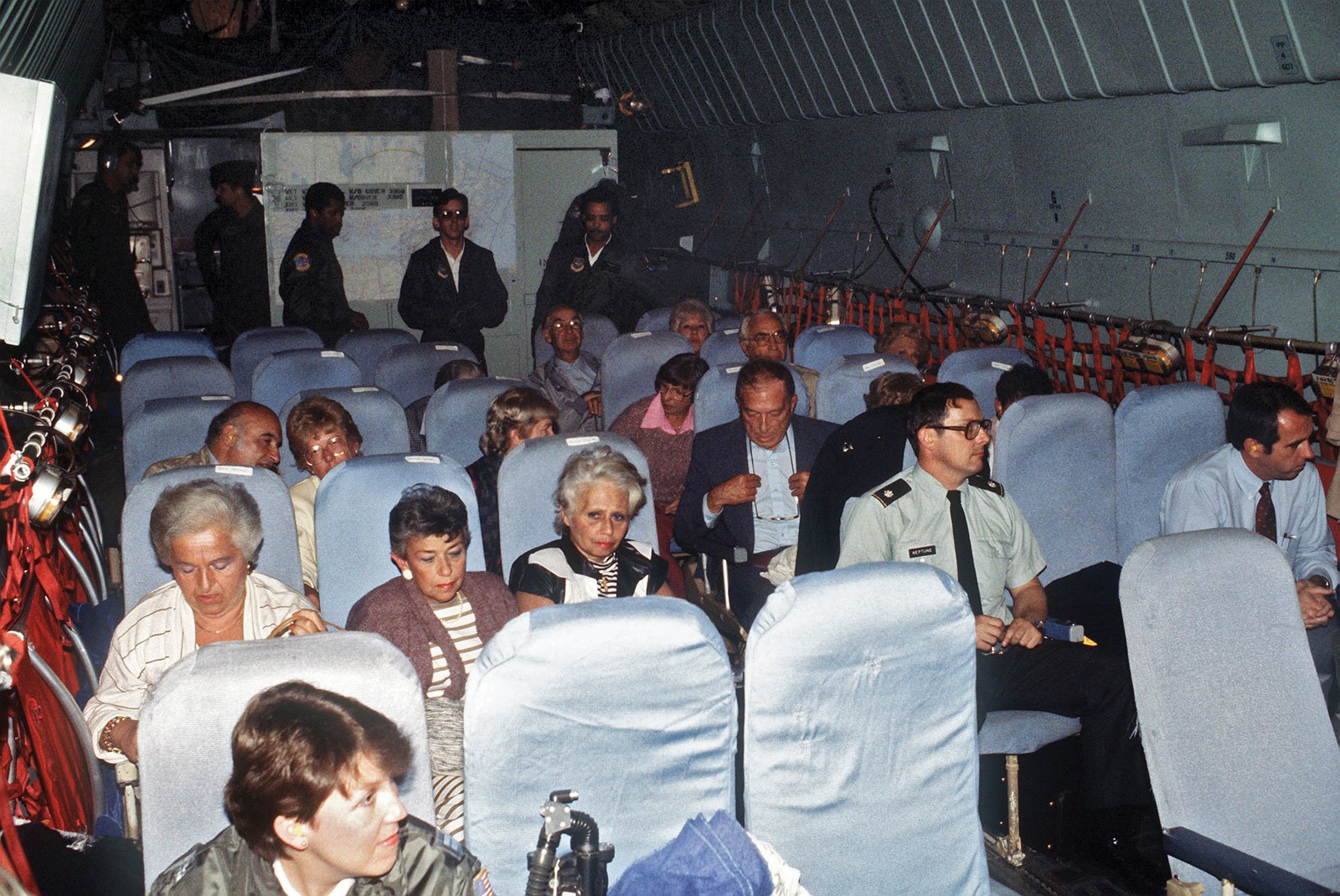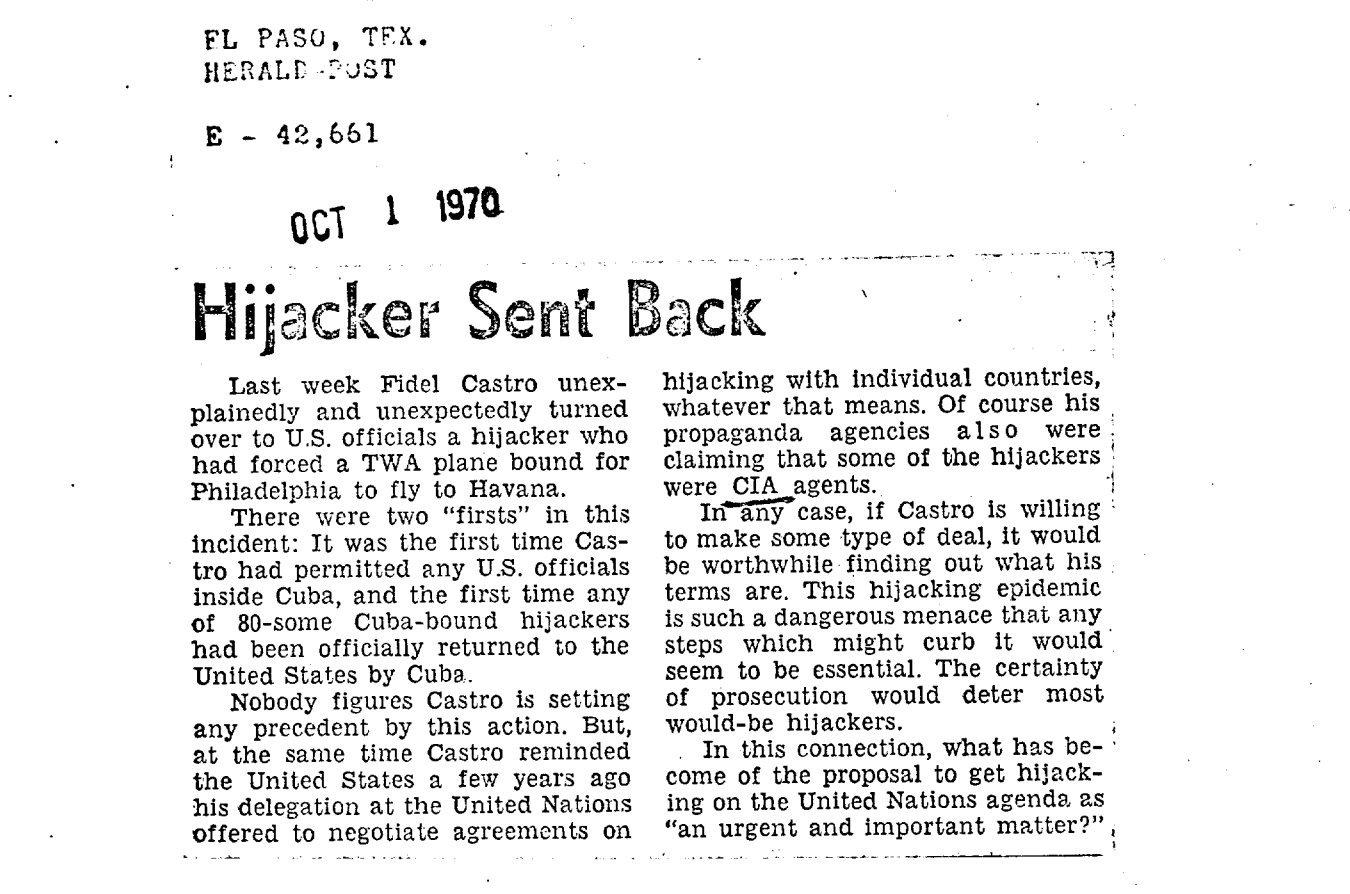The Belarus Hijacking Was Brazen and Illegal — but the US Has Its Own History of Diverting Airplanes

An F-14 from the USS Saratoga’s VF-74 squadron. The squadron’s F-14s forced down an Egypt Air 737, like that shown upper right, carrying hijackers who had murdered an American. Photos from DVIDs and EgyptAir websites.
Secret agents and fighter jets from Belarus pulled off an audacious hijacking in late May, breaking a long list of international laws and treaties to arrest a journalist who had been critical of the nation’s dictator.
As an Irish-flagged RyanAir flight between Athens and Lithuania passed over Belarus on a routine flight plan, agents declared a bomb threat on board the flight, and a Belarus Mig fighter forced the Irish jet to land in Minsk. There, police arrested Roman Protasevich and his girlfriend.
The hijacking drew unanimous outrage from the West — along with praise from Russia — and threatened Belarus’ access to international flight traffic.
Agents on the ground appear to have tailed Protasevich onto his flight, which Belarus authorities knew would overfly the country. Once airborne, Belarus was able to coordinate the bomb threat, orders from air traffic control to land at Minsk — well off the flight path — and the scrambled Mig before the flight left Belarus territory, with police ready on the ground.
Predictably, the US has condemned the operation to force down the plane.

But the incident is not unprecedented. In fact, the US has a history of redirecting flights by use of force — or, in some cases, of just being accused of it.
After a spate of skyjackings throughout the 1960s and ’70s, Congress passed the Comprehensive Crime Control Act of 1984, allowing the US government a free pass to snatch whomever they wanted, wherever they wanted, if terrorists had taken any Americans hostage during the commission of their crimes.
In 1985, the US government found the chance to take advantage of the new jurisdictional freedom it had given itself with the capture of Palestinian terrorists who had hijacked an Italian cruise ship, the Achille Lauro, and killed an American. The Palestinian men had stormed the ship, demanding the release of prisoners in Lebanon and taking all aboard — including 11 Americans — hostage.
As tense negotiations dragged on, the hijackers killed elderly Jewish American Leon Klinghoffer, who at 69 was wheelchair-bound. The Palestine Liberation Front were able to dock in Egypt, releasing the remaining passengers and crew in return for safe passage to Tunisia.

The men boarded an EgyptAir 737 and took off. Meanwhile, F-14s from the aircraft carrier Saratoga, flying with lights out, were searching for them. When they found the airliner, they forced it to land in Sigonella, Italy. The hijacking led to a second standoff, this one between US special forces and the Italian military. While US forces surrounded the plane, Italian forces — justifiably claiming that Sigonella was and is an Italian military base, on which US forces are only a resident tenant — surrounded the Americans. Egyptian President Hosni Mubarak accused the US of “piracy,” and the Italian security forces around the plane even had orders to shoot any Americans trying to storm it.
After a political standoff between President Ronald Reagan and Italian Prime Minister Bettino Craxi, the terrorists surrendered to Italian authorities. They were all sentenced to long jail terms by Italian courts.
But while the Achille Lauro force-down was a well-documented US operation, the 1960s and ’70s saw a series of hijackings that the US was accused of orchestrating.

In 1964, a man named Reinaldo Lopez-Lima hijacked a small plane with an accomplice in Key West, Florida, forcing the pilot to fly to Cuba. In later court proceedings, Lopez-Lima claimed he was working for the CIA, and that the hijacking to Cuba was his cover story, meant to ingratiate him with the Cuban military. Once inside, he claimed, he would covertly work with anti-Cuban forces.
In a US court case against Lopez-Lima, a federal judge ruled that he could introduce evidence of CIA involvement, though the case was dismissed before trial.
True or not, the Cubans didn’t bite, jailing Lopez-Lima for 20 years before returning him to the US.
In 1970, a Vietnam veteran named Robert Labadie, 27, hijacked a TWA flight to Cuba. This time, it wasn’t the hijacker claiming CIA subterfuge but the Cuban government. It sent Labadie home, while Castro and the Cuban press agency Prensa Latina claimed of the hijacking that “the CIA uses the method in efforts to ‘infiltrate the country.’”
Read Next:

Lauren Coontz is a former staff writer for Coffee or Die Magazine. Beaches are preferred, but Lauren calls the Rocky Mountains of Utah home. You can usually find her in an art museum, at an archaeology site, or checking out local nightlife like drag shows and cocktail bars (gin is key). A student of history, Lauren is an Army veteran who worked all over the world and loves to travel to see the old stuff the history books only give a sentence to. She likes medium roast coffee and sometimes, like a sinner, adds sweet cream to it.
BRCC and Bad Moon Print Press team up for an exclusive, limited-edition T-shirt design!
BRCC partners with Team Room Design for an exclusive T-shirt release!
Thirty Seconds Out has partnered with BRCC for an exclusive shirt design invoking the God of Winter.
Lucas O'Hara of Grizzly Forge has teamed up with BRCC for a badass, exclusive Shirt Club T-shirt design featuring his most popular knife and tiomahawk.
Coffee or Die sits down with one of the graphic designers behind Black Rifle Coffee's signature look and vibe.
Biden will award the Medal of Honor to a Vietnam War Army helicopter pilot who risked his life to save a reconnaissance team from almost certain death.
Ever wonder how much Jack Mandaville would f*ck sh*t up if he went back in time? The American Revolution didn't even see him coming.
A nearly 200-year-old West Point time capsule that at first appeared to yield little more than dust contains hidden treasure, the US Military Academy said.












